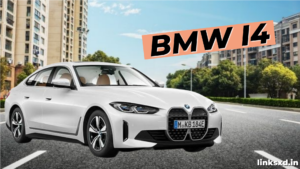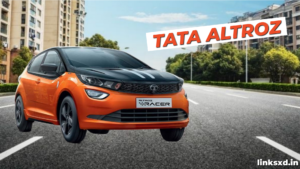Light Vehicle Sales
Global light vehicle sales are projected to rebound in 2024 due to output gains and replenished inventories, but momentum could slow due to economic recession risks, sticky interest rates, affordability concerns associated with higher new car prices, and decreasing EV subsidies.Light Vehicle Sales
Automakers have also invested substantial resources into two emerging technologies – autonomous driving and electrified vehicles – further adding pressure to break-even costs, analysts report.Light Vehicle Sales
Light Vehicle Sales | The U.S. Auto Industry
As 2023 became 2024, auto dealers across the nation came face-to-face with a stark reality: slow growth and slim margins. Their most profitable market, the new-car market, was constrained by limited inventories, high vehicle prices, and rising interest rates that made buying cars increasingly expensive. Meanwhile, their lifeblood, used car dealers’ existence depended upon relatively tight supplies at relatively high prices that required higher loan rates if purchased new.Light Vehicle Sales
The COVID-19 pandemic caused widespread disruptions to global production and forced many employees to work from home, which negatively impacted automobile sales and consumer demand for automobiles. But overall, auto industry production targets will likely meet or surpass their pre-pandemic targets this year.
Though CEOs still lament supply constraints, light vehicle market fundamentals have experienced dramatic changes since June. Demand and supply dynamics have changed from an imbalance that caused 2022 growth losses, to being a challenge that keeps marketers striving to make their vehicles stand out.Light Vehicle Sales
Automakers will remain committed to innovation in 2024. Their products will increasingly incorporate hybrid drivetrains that provide fuel savings at a modest premium and drive like traditional cars, bolstering brand recognition with advertising campaigns that tout its benefitsLight Vehicle Sales

Light Vehicle Sales | The U.K. Auto Industry
UK automobile production once held great distinction, producing some of the world’s most sought-after vehicles such as Rolls-Royce Silver Dawn, Austin A90 Atlantic, Jaguar Mark V and Aston Martin DB1. As other countries began developing their own automotive industries however, output decreased and production output began to diminish.
Even as production declines, the automotive industry looks set for an exciting future. With more buyers turning towards electric vehicles (EVs), manufacturers are increasing production to meet increasing buyer demand and capitalize on export market opportunities. Chinese brands investing in Europe and UK also bode well for its future success.
Car production in the UK got off to an auspicious start this year, with manufacturing output increasing 17% year-on-year in January alone. Fleet sales drove much of this expansion, reflecting their increasing shift toward electric vehicles (EVs). This trend is projected to continue throughout 2024 as manufacturers invest more heavily in their EV production capabilities.Light Vehicle Sales
Numerous factors have hindered the UK automotive industry over time. Labor-intensive production methods, legacy marques and models, and wide model ranges all hindered opportunities for efficient high-volume production. Meanwhile, as other nations developed manufacturing processes with reduced labor requirements than those available here; unit costs became more costly in comparison to major competitors resulting in sales decline.
Light Vehicle Sales | The German Auto Industry
Germany is home to some of the world’s premier auto manufacturers, including Volkswagen, BMW and Mercedes-Benz. This industry has long been an economic driver by creating jobs and increasing profits; however, this shift is being caused by rising interest in electric vehicles (EVs) and mobility solutions – particularly within China itself.
German auto industry must adapt to this shifting environment, yet this task is much easier said than done. Unfortunately, many of its own successful characteristics – arrogance and resistance to change being key contributors – are holding it back today. For years German execs believed they could ignore environmental concerns while keeping developing cars engines. Furthermore, they failed to recognize consumers’ changing attitudes toward them as consumers were also shifting.
The industry must focus on its future rather than only adapting for today. This requires shifting away from valves and pistons that have defined it for over 100 years and towards battery cells and lines of software code; adopting technologies developed by Silicon Valley startups; competing against Chinese competitors who prioritize sustainability; as well as abandoning any notion that government subsidies are needed in an industry which offers high-paying jobs.

Light Vehicle Sales | The Japanese Auto Industry
Japan’s auto industry dominated global markets during the 20th century, becoming known for its reliability and meticulous engineering. Britain was noted for its automotive design flair while Germany became known for aspirational marketing campaigns and driving passion.
Japan’s ascent to automotive preeminence can also be traced to government support in various forms – whether financial assistance in the form of subsidies and contracts; direction support like tie-up facilitation with foreign companies; protection against unruly unions or foreign competition – just to name a few.
Japanese manufacturers were given a helping hand by the government in developing and producing vehicles that were both innovative and profitable, streamlining production to create an efficient supply chain – this enabled them to compete against American and European manufacturers and eventually dominate world markets.
Today’s auto makers remain dedicated to increasing sales of new vehicles while simultaneously realizing the future of the automobile is changing from traditional gasoline-powered models towards autonomous electric and hybrid electric cars.
As such, they have made substantial investments in new technology and work to cultivate talent from within to ensure they remain competitive. This involves an emphasis on STEM education programs from kindergarten to mid-career level as well as creating safe work environments where women can flourish within the auto industry.



